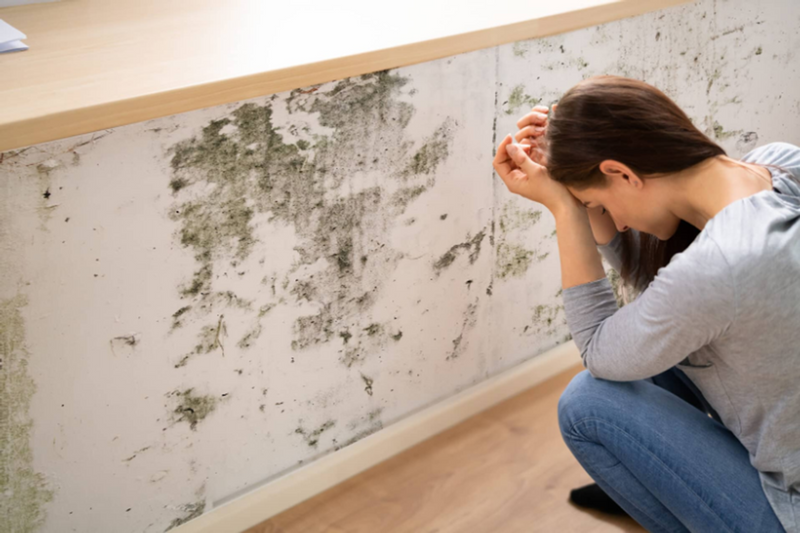Let’s be honest.
The term "mental health" is everywhere. But what does it actually mean?
For a long time, it was a hushed-toned topic, something discussed only in clinical settings. Today, it’s part of our daily conversation.
But there’s a problem.
With so much noise, it’s easy to get lost. Are you just stressed, or is it something more? What help is really effective? And how do you navigate a world that seems to be causing the very problems we’re trying to solve?
This is not just another article about mental health.
This is your ultimate guide.
We’re going to cut through the noise and show you the real story. We'll cover the scope of the crisis, break down specific conditions, explore the root causes (including the controversial ones), and lay out a clear roadmap to getting help.
Ready?
Let's dive in....
The Scope of the Modern Mental Health Crisis
To get a grip on the solution, we first need to understand the scale of the problem. Right?
Defining Mental Health
First, let's get our definitions straight.
Mental health isn't just the absence of mental illness.
According to The World Health Organization (WHO), It's a state of well-being where
- You can realize your own potential
- Cope with the normal stresses of life
- Work productively, and
- Contribute to your community.
There are three core components:
- Emotional Well-being: Liking yourself, feeling contentment, and managing your emotions.
- Psychological Well-being: Having a sense of purpose, autonomy, and personal growth.
- Social Well-being: Feeling a sense of belonging, having strong relationships, and contributing to society.
So, you might be wondering where’s the line between a bad day and a clinical issue?
Everyday distress is a normal reaction to a tough situation (a breakup, a job loss). It’s temporary and usually resolves on its own. A clinical mental illness, however, involves significant, persistent changes in thinking, emotion, or behavior that cause distress and impair your ability to function.
Key Statistics and Demographics
Let's look at the numbers. They're staggering.

Prevalence: Nearly 1 in 5 U.S. adults live with a mental illness. For adolescents (ages 13-18), that number is even higher, with almost 50% experiencing a mental health disorder at some point in their lives.
Age of Onset: This is critical. 50% of all lifetime mental illness begins by age 14, and 75% by age 24. This isn't just an adult problem; it starts young.
Disparities: Mental illness doesn't affect everyone equally. LGBTQ+youth are more than twice as likely to report experiencing persistent feelings of sadness or hopelessness than their heterosexual peers.
Stop and re-read that last statistic. Twice as likely. This isn't a personal failing; it's a societal one.
Suicide: A Critical Public Health Issue

We can't talk about mental health without talking about suicide.
The link is undeniable: over 90% of people who die by suicide have a diagnosable mental health condition.
It's the 2nd leading cause of death for people ages 10-34 in the U.S.

Men die by suicide 3.5x more often than women, though women are more likely to attempt suicide.
The bottom line? This is a life-or-death conversation.
Understanding Specific Mental Health Conditions
"Mental illness" is an umbrella term. Let's zoom in on two specific examples to see how different they can be.
Schizophrenia

Schizophrenia is one of the most misunderstood mental illnesses.
It's a serious condition that affects how a person thinks, feels, and behaves. People with schizophrenia may seem like they've lost touch with reality. The typical age of onset is in the late teens to early 30s.

Symptoms are often categorized as:
- Positive Symptoms (things that are added): Hallucinations (seeing or hearing things that aren't there), delusions (strong beliefs that aren't true), and disorganized thinking.
- Negative Symptoms (things that are taken away): Reduced emotional expression, lack of motivation, social withdrawal, and difficulty experiencing pleasure.
It's the negative symptoms that often have the biggest impact on a person's ability to function.
Perinatal Mood and Anxiety Disorders (PMADs)
Ever heard of the "baby blues"?
That's the period of worry, sadness, and tiredness that many women experience after giving birth. It's common and usually fades within a couple of weeks.
PMADs are not the baby blues.
Perinatal Mood and Anxiety Disorders are a group of symptoms that can affect women during pregnancy and up to a year after giving birth. They are the most common complication of childbirth.
Common symptoms include:
- Severe mood swings, depression, or anxiety.
- Intense irritability or anger.
- Difficulty bonding with the baby.
- Frightening thoughts about harming yourself or the baby.
Risk factors include a personal or family history of mental illness, a difficult pregnancy, or lack of social support. It's a serious medical condition that requires treatment.
Exploring the Root Causes
So, why is this happening?
The causes are complex, but modern life presents some unique and powerful challenges.
Societal and Cultural Factors
Have you heard of "The Coddling of the American Mind"?
Authors Greg Lukianoff and Jonathan Haidt argue that a culture of "safetyism" on college campuses is actually harming students by promoting "Three Great Untruths":
- The Untruth of Fragility: What doesn’t kill you makes you weaker. (The opposite of the old adage).
- The Untruth of Emotional Reasoning: Always trust your feelings.
- The Untruth of Us Versus Them: Life is a battle between good people and evil people.
This mindset, they argue, makes young people less resilient and more prone to anxiety and depression.

Then there's social media.
Internal Facebook research, leaked to the public, showed that the company knew Instagram was worsening body image issues for one in three teen girls. The constant comparison, the curated "perfection," the performance of happiness—it's a recipe for anxiety and low self-esteem.
Environmental and External Pressures
Your environment plays a massive role.
- The Workplace: "Burnout" is now an official medical diagnosis by the WHO. It's a state of emotional, physical, and mental exhaustion caused by excessive and prolonged stress. It's not just about working long hours; it's about feeling a lack of control, unclear job expectations, and a breakdown of community. Progressive companies are realizing that Diversity, Equity, and Inclusion (DEI) initiatives are pointless without creating a culture of sustainable work practices.

- The Academic Environment: Students are facing immense pressure. The debate is raging: are universities responsible for their students' mental health? Many argue for a "statutory duty of care," making institutions legally responsible for providing a certain level of support.
The Role of Lifestyle in Mental Wellness
You have more control than you think. Your daily habits are incredibly powerful.
Sleep and Mental Health
Sleep isn't a luxury; it's a biological necessity. And most of us are terrible at it.
The relationship between sleep and mental health is bidirectional. This means sleep deprivation can worsen mental health conditions, and mental health conditions can destroy your sleep.
It's a vicious cycle.
Think of it this way: your brain has a cleanup crew. It's called the glymphatic system, and it's 10 times more active when you're asleep. It clears out toxins, including the ones linked to neurodegenerative diseases.
What happens when you don't get enough sleep?
- Your amygdala, the brain's emotional control center, goes into overdrive. One study found a 60% increase in amygdala reactivity in sleep-deprived individuals.
- The result? You're more irritable, more anxious, and more likely to see the world through a negative lens.

Physical Activity and Environment
Your body wasn't designed to sit still all day. It was designed to move.
- Exercise: Here's a mind-blowing fact. Studies have shown that regular, moderate exercise can be just as effective as SSRI antidepressants for treating mild to moderate depression. Why? It releases endorphins, reduces inflammation, and promotes the growth of new brain cells.
-
Your Space: Ever feel stressed out in a messy room? That's not just in your head. Researchers at Princeton found that a cluttered environment competes for your attention, resulting in decreased performance and increased stress. It's called "clutter anxiety."
Actionable Tip: You don't need to become a minimalist. Just spend 5 minutes tidying one small area. The sense of control can be incredibly calming. - Video Games (The Double-Edged Sword): Yes, there are benefits! But the WHO now officially recognizes "Gaming Disorder." The key is the loss of control—when gaming takes precedence over other life interests and daily activities despite negative consequences. It's a real addiction.
Diet and Nutrition
The gut is often called the "second brain." And it's a really big deal.

Here's why: about 95% of your serotonin (a key mood regulator) is produced in your gastrointestinal tract. Your gut is lined with a hundred million nerve cells.
So, what you eat directly impacts how you feel.
A diet high in processed foods, sugar, and unhealthy fats can promote inflammation and kill off the healthy bacteria in your gut. This can lead to:
- Increased anxiety
- Worsened depression
- Brain fog
On the other hand, a diet rich in whole foods can be protective. The Mediterranean diet, for example, has been linked to a significantly lower risk of depression.
Key nutrients to focus on:
- Omega-3 Fatty Acids (found in fish, flaxseeds): The building blocks of your brain.
- B Vitamins (found in leafy greens, eggs): Crucial for producing mood-regulating brain chemicals.
- Magnesium (found in nuts, seeds, dark chocolate): Helps calm the nervous system.
Pathways to Help: Clinical and Proactive Solutions
So, we've seen the problem. It's big. It's complicated.
Now for the good part: The solutions.
And I'm not talking about some vague advice to "just relax."
I'm talking about a battle-tested, two-front attack plan:
- Professional-grade, clinical help.
- Powerful daily habits that YOU control.
Let's get into it.
Professional Treatment Options
First up, the heavy hitters.
This is about getting expert help from people trained to navigate the complexities of the human mind.
-
Therapy: Your Brain's Personal Trainer Forget the old movie trope of lying on a couch talking about your mother.
Modern therapy isn't just about talking on a couch. It's a hands-on, goal-oriented process that gives you the tools to actively manage your thoughts and emotions.
The best part? It has an insane success rate. We're talking 75-80% of people see real, tangible benefits.
There are over 50 types of therapy, but here are two absolute powerhouses:-
- Cognitive Behavioral Therapy (CBT): This is the undisputed champion for treating anxiety and depression. It's based on a simple idea: your thoughts control your feelings. If you can change your thoughts, you can change your life. A CBT therapist gives you the tools to catch, challenge, and change negative thought loops.
- Dialectical Behavior Therapy (DBT): Think of this as CBT's cousin, designed specifically for people who feel emotions with incredible intensity. It adds a layer of mindfulness and acceptance, teaching you how to ride the wave of a powerful emotion without letting it crash down on you.
-

-
Medication: A Tool, Not a Crutch Let's be clear: medication isn't a "happy pill" that magically solves your problems.
It's a tool.
For many, it's a life-saving tool that can correct a chemical imbalance, giving you the stability you need to do the hard work in therapy.
And the data is crystal clear: therapy and medication together are the ultimate combo. One massive study found that combining CBT with medication boosted the success rate for treating depression to an incredible 73%. -
Finding the Right Level of Care Just like with physical health, mental health care isn't one-size-fits-all. It's a spectrum.
-
- Outpatient: This is your standard weekly therapy session.
- Intensive Outpatient (IOP): A step up. You go to therapy for several hours, a few days a week.
- Partial Hospitalization (PHP): Even more intensive. It's like a full-time job focused on getting better.
- Residential: The highest level of care, where you live at a facility with 24/7 support. [Illustrative Visual: A vertical diagram or pyramid showing the different levels of care (Outpatient, IOP, PHP, Residential) as a spectrum of intensity.]
-
Self-Care That Actually Works
Now for the second part of our attack plan: The stuff YOU can do. Every. Single. Day.
And no, I'm not just going to tell you to take a bubble bath.
This is about building a fortress of well-being around yourself, brick by brick. These are the small hinges that swing big doors.
- Practice Mindfulness (Without Sitting on a Cushion for Hours)
You've heard of mindfulness. But what is it really?
It's the simple practice of paying attention to the present moment, without judgment.
Why does it matter?
Because a Harvard study found we spend 47% of our lives on autopilot, with our minds wandering. And that mind-wandering is a direct cause of unhappiness.
Your Action Step: Start with a "one-minute anchor." Pick one thing you do every day—like your first sip of coffee. For that one minute, just focus on the sensory experience: the warmth of the mug, the smell, the taste. That's it. You're building your mindfulness muscle.
- Use a Journal to Tame Your Thoughts Anxious thoughts love to swirl around in your head.

The secret to taming them?
Get them out.
Writing them down stops the loop and lets you see them for what they are: just thoughts. Here are three powerful journaling techniques:
-
-
- The Brain Dump: Open a page and write whatever comes to mind for 10 minutes straight. No filter. No judgment. Just get it all out.
- The Gratitude Hit: Write down three specific things you're grateful for. Not "my family." But "the way my dog rested his head on my lap." Specificity is key.
- The Worry Containment Plan: Got a big worry? Schedule a 15-minute "worry appointment" for later in the day. If the worry pops up before then, tell yourself, "Nope, not now. I'll deal with you at 5 PM." It's a surprisingly effective way to take back control.
-
-
Master the Art of the Boundary A boundary isn't a wall you build to keep people out.
It's a line you draw to protect your own energy.
Burnout is almost always a symptom of weak boundaries. What does a healthy boundary sound like?-
- "I'd love to help, but I don't have the capacity to take that on right now."
- "I'm turning off work notifications at 6 PM to be present with my family."
- "I need some quiet time to recharge, so I'm going to sit this one out."
-
- It feels weird at first. But it's one of the most powerful things you can do for your long-term mental health.
The Power of Open Dialogue and Community

You cannot do this alone. Period.
Let me say that again. You cannot do this alone.
Mental health struggles thrive in isolation. They whisper lies that you're the only one, that no one would understand, that you're a burden.
That's why connection isn't just a nice-to-have. It's a core part of the solution.
Breaking the Stigma: The Silent Enemy
The single biggest barrier to people getting help is stigma.
It's the fear of being judged. The fear of being seen as weak, "crazy," or incompetent.

How bad is it?
- A 2019 national poll found that nearly one-third of Americans worry about others judging them if they were to seek mental health care.
- Worse, one in five worry about it affecting their job security.
Stigma isn't just about what other people think (public stigma). It's also about what we think of ourselves (self-stigma). It's that voice in your head that says, "I should be able to handle this on my own."
Every single time a person shares their story, they fire a cannonball at the walls of stigma. They prove that mental illness is not a character flaw. It's a human experience.
Community: Your Biological Lifeline
Humans are hardwired for connection.
When we feel isolated, our bodies go into a state of high alert. In fact, one meta-analysis covering over 300,000 people found that loneliness is as deadly as smoking 15 cigarettes a day.
Let that sink in.
Community is the antidote. And it comes in many forms:
- Peer Support Groups: This is where the magic happens. A peer support group connects you with people who get it. They've been in the trenches. The feeling of being truly understood without having to over-explain yourself is incredibly healing. It's a place where you can take off the mask.
- The Unique Struggle for Men: We need to have a real talk about men's mental health. Traditional masculinity tells men to be "strong and silent." To bottle things up. The result? Men are four times less likely than women to seek therapy, even when they're struggling. Creating spaces where men can be vulnerable without judgment is a critical mission.
How to Actually Talk to a Friend Who's Struggling
We've all been there. You can tell a friend is off, but you don't know what to say.
Don't say: "What's wrong?" or "Let me know if you need anything." (Too vague).
Try this instead:
- Start with an observation: "Hey, I've noticed you seem a bit down lately."
- State your care: "I'm thinking about you and I care about you."
- Ask an open-ended question: "How are you, really?" or "What's been on your mind?"
- Just listen: You don't have to fix it. Just listen. The gift of your full, non-judgmental attention is more powerful than any advice you could give.
Connection is the kryptonite to the isolation that mental illness craves. Find your people.
The Future of Support: Innovation and Accountability
So, what's next?
The world of mental health support isn't standing still. Not even close.
In fact, it's changing faster than ever.
This final section is about what's coming. It's about the game-changing tech and the radical new standards of responsibility that are reshaping everything.
Tech: Your Therapist Might Be a Video Game
Forget everything you think you know about "mental health apps."
This isn't just about another meditation timer.
We're in the new age of Digital Therapeutics.
What does that even mean?
It means software that is prescribed by a doctor. Backed by clinical trials. And approved by the FDA.
Case in point: EndeavorRx.
It's a video game.
Let me say that again: It's a video game that is clinically proven to improve attention function in kids with ADHD.
This is software as medicine. And it's only the beginning.
Then you have AI that actually listens.
Chatbots like Woebot use proven CBT frameworks to offer support.
Anytime. Anywhere.
The result?
A Stanford study found that just two weeks with Woebot led to significant reductions in depression and anxiety.
But here's the catch (and it's a BIG one):
The digital health market is the Wild West.
A recent report found that tons of popular mental health apps have sketchy privacy policies, sharing your data with anyone from Facebook to Google.
The bottom line: The future isn't just about more tech. It's about tech that's smart, safe, and scientifically proven to work.
Accountability: It's Not Just Your Problem Anymore
For decades, the message from institutions was simple:
"You're on your own."
That is finally changing.
Why?
Because they've realized that ignoring mental health is an incredibly expensive mistake.
Look at the workplace.
The WHO dropped a bombshell: depression and anxiety cost the global economy $1 TRILLION a year in lost productivity.
That's trillion. With a "T".

So now, the smartest companies are racing to get ahead of the curve.
They're not just adding a ping-pong table to the breakroom. They're offering real, powerful support:
- Free access to elite therapy platforms like Lyra Health.
- Dedicated mental health days (that aren't just sick days in disguise).
- Training managers to be the first line of defense.
This isn't charity. It's a killer business strategy.
And the same revolution is happening at universities.
The big conversation is about a "duty of care."
It's a simple idea with huge implications: that schools have a formal, proactive responsibility for their students' well-being.
It means moving from a reactive model ("wait for a crisis") to a preventative one ("stop the crisis before it starts").
Finding Help: Your Final Action Step
Okay. We've covered a ton of ground.
But it all comes down to this one, single thing:
Knowing where to turn.
If you or someone you know is struggling, do not wait.
Reaching out isn't a sign of weakness. It's the ultimate sign of strength.
- For Immediate Crisis Support: Call or text 988 in the US and Canada. In the UK, you can call 111. This is your 24/7 lifeline.
- To Find Treatment Options: Don't know where to start? SAMHSA's National Helpline is a free, confidential service that will point you to treatment centers, support groups, and local resources.
- For LGBTQ+Youth: The Trevor Project provides 24/7 crisis support and a safe, non-judgmental community.
Now It's Your Turn
Alright, that was a lot….
Now I want to turn it over to you.
What's the #1 insight you're taking away from this guide?
Is it the power of a "worry appointment"? Or the fact that loneliness can be as deadly as smoking?
But if you remember just one thing from this guide, make it this:
You have more power over your mental well-being than you think. And help is closer than you realize.
















